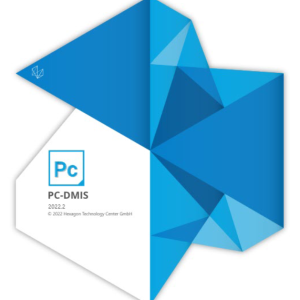Altair PSIM v2022.2
$ 150.00
The ultimate simulation environment for power conversion and motor control.
When get-to-market time is critical, PSIM’s power electronics simulator delivers unbeatable simulation speed while producing high-quality system-level results. Even with no prior experience, PSIM’s friendly user interface means easy implementation and seamless adoption in any environment.
PSIM and its add-on modules provide robust system-level design and simulation across multiple areas.
Description
Explore Solutions for your Specific Application
Rapid Power Electronics Simulation. Trusted results.
The ultimate simulation environment for power conversion and motor control.
” In terms of accuracy, I was surprised how PSIM simulation results are close to the actual experiments.
If the designed hardware is proper, you can expect the experimental results to match the PSIM simulation results.”
Design Verification.
The Design Verification Toolset provides Monte Carlo Analysis, Sensitivity Analysis, and Fault Analysis tools for design verification.
Swift power loss calculation.
PSIM’s Thermal Module lets you quickly calculate the switching and conduction losses of switching devices and the core and winding losses of inductors – without slowing down simulation speed.
More than 25 years ago, Powersim created its core design and simulation software PSIM to empower engineers in the power electronics design industry. PSIM provides expert circuit and systems-level design and simulation capabilities. Our software has evolved to include multiple products in addition to PSIM plus third-party software integration, and hardware target support.
Release Notes / Altair PSIM 2022.1
© Altair Engineering, Inc. All Rights Reserved. / altair.com / Nasdaq: ALTR / Contact Us 1
New Features and Enhancements PSIM 2022.1
Release Highlights
Altair PSIM Licensing
PSIM 2022.1 is the first release of PSIM after the acquisition of PowerSim Inc. by Altair. In this release, PSIM now also supports the
Altair Licensing system.
A new setup dialog for License Configuration has the option for using the Altair license or PSIM legacy license. Upon installation of PSIM,
user will then be offered to use the various options (managed, server, local file) available with Altair Licensing.
Improvement in thermal module
• New thermal .XML database
The Thermal device database folder is now provided with semiconductor devices in the .XML format which can be edited by
any text editors. The previous. DEV format is still supported. Around 400 new devices are added.
Release Notes / Altair PSIM 2022.1
© Altair Engineering, Inc. All Rights Reserved. / altair.com / Nasdaq: ALTR / Contact Us 2
The Device Database Editor (PcdEditor) can now be used to add new devices and manage devices in the .XML format.
• Integrated into multi–level switch models
The multi–level switch models are now integrated to support thermal switching characteristics as well.
The Model Level drop–down box in switch elements can now be used to select Thermal:
New Power Supply Design Suite templates
Three new templates are provided in Power Supply Design Suite (PSDS) for the design of peak current mode controlled (PCMC) dc–dc
converters.
PCMC Boost Converter Template
The overall structure of the new PCMC dc–dc boost converter template with the system–level design and the PWM IC implementation is
shown below:
Release Notes / Altair PSIM 2022.1
© Altair Engineering, Inc. All Rights Reserved. / altair.com / Nasdaq: ALTR / Contact Us 3
PCMC Buck Converter Template
The overall structure of the new PCMC dc–dc buck converter template with the system–level design and the PWM IC implementation is
shown below:
Release Notes / Altair PSIM 2022.1
© Altair Engineering, Inc. All Rights Reserved. / altair.com / Nasdaq: ALTR / Contact Us 4
PCMC Flyback Converter Template
The overall structure of the new PCMC dc–dc flyback converter template with the system–level design and the PWM IC implementation
is shown below in the figure:
New 3–phase elements
• Voltage sensor and probe
A new 3–phase voltage sensor element is added:
A new 3–phase voltage probe element is added:
Release Notes / Altair PSIM 2022.1
© Altair Engineering, Inc. All Rights Reserved. / altair.com / Nasdaq: ALTR / Contact Us 5
• Current sensor and probe
A new 3–phase voltage sensor element is added:
A new 3–phase voltage probe element is added:
Release Notes / Altair PSIM 2022.1
© Altair Engineering, Inc. All Rights Reserved. / altair.com / Nasdaq: ALTR / Contact Us 6
Direct Co–simulation Link with Activate
A new PSIM cosimulation block is added in Palettes → Activate → CoSimulation for the direct co–simulation between PSIM and
Activate.
Direct Co–simulation Link with Embed
A new PSIM cosimulation block is added in Embed → Blocks → Extensions for the direct co–simulation between PSIM and Embed.
Release Notes / Altair PSIM 2022.1
© Altair Engineering, Inc. All Rights Reserved. / altair.com / Nasdaq: ALTR / Contact Us 7
Other Improvements
• New timestep tutorial video cross link
Resolved Issues
• B–H curve tool do not refresh graph sometimes when the values are modified
• SimCoder generates wrong code for SPI when there are multiple input channels with same sampling rate.
• SimCoder doesn’t support ‘Active Low Complementary’ dead time mode
• A minimized help window is easily lost
• PSIM AC sweep examples
• PSIM unrecoverable simulation warning
• .smv file corrupted to pull frequency info when plotted
• ADC multisampling documentation
• SimCoder generates wrong code for single out circular buffer
• Hard – crash FFT .smv file causes hard crash
• Codegen Issue when SUM block has one logic input
















